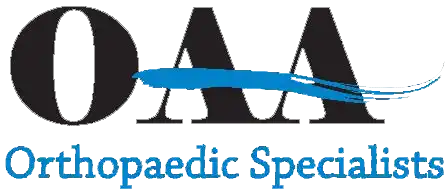As a worker, you have a right to feel safe on the job. But even with the tightest adherence to regulations and the best prevention measures in place, work-related injuries still sometimes happen. Some of these injuries are more common than others -- but how can you practice prevention if you don’t know what to watch out for?
At OAA Orthopedic Specialists, our Work Injury Center is dedicated to helping both workers and employers navigate the world of workers’ compensation and ultimately helping workers return to the job with safety and confidence. Here are the three most common occupational injuries every employee should be aware of:
1. Repetitive Motion Strain
Repetitive motion is an unavoidable part of all kinds of labor, from office work to factory work. But without the appropriate amount of prevention or rest, repetitive motion can easily lead to strain on the muscles and tendons. Your hands and wrists are especially at risk for this type of workplace injury, and because repetition is involved in actions from using a keyboard to wielding a power tool, a wide variety of workers can be affected.
These types of injuries may seem fairly low-impact, but it’s important to prevent them if you can and receive treatment as soon as possible -- they can eventually develop into serious conditions such as carpal tunnel syndrome that may require surgery to correct.
2. Slips, Trips and Falls
Slipping, tripping and falling are some of the most well-known workplace hazards, and many regulations put forth by the Occupational Safety and Health Administration (OSHA) are in place with the intention of preventing these incidents. That’s because even the most seemingly innocuous fall can end up doing serious damage to your body, particularly in the following areas:
- Twisted knees
- Twisted ankles
- Pulled muscles in the back
- Neck strain
- Muscle tears
- And more.
To avoid these types of injuries, always be sure to stay aware of your surroundings while at work. If you see a potential tripping hazard, don’t stay silent! Go to your employer as soon as you can to get the problem taken care of before you or someone you work with gets hurt.
3. Overexertion Injuries
While each of these three types of workplace injuries has shown to be quite common, there’s one that tops the list. According to the National Safety Council, injuries that occur due to overexertion are the most common workplace injuries, making up 35% of all reported work injuries in the United States and resulting in almost as many missed workdays as the common cold. Most overexertion injuries affect the muscles in your back and can lead to chronic and debilitating pain that may require extensive treatment (or, in some cases, surgery).
However, any muscle can become damaged due to overwork. Workers who are most at risk for overexertion injuries include those who consistently perform heavy lifting tasks, such as delivery professionals and construction workers. That said, even office workers can potentially sustain an overexertion injury from sitting in an improper position or using unsuitable desks and chairs.
The common denominator between all of these common work-related injuries is that without proper treatment -- and sometimes, without cooperation from employers in making the necessary changes to the work environment -- they can all progress into more serious conditions that result in more pain, longer recovery, and more time missed from work. If you’re experiencing pain, loss of mobility, or other symptoms of a work-related injury, don’t wait. Alert your employer as soon as possible, and call the Work Injury Center at OAA to receive your first exam.
If you’ve been injured on the job, OAA’s Work Injury Center is here to help you navigate the workers’ compensation process and make a rapid, successful return to work. If you’re ready to start living pain-free, schedule an appointment with us today!
Frequently Asked Questions
1. What should I do if I sustain a work-related injury?
It is important to seek medical attention and report the incident to your employer as soon as possible if such injuries occur while working. This will not only help with your recovery, but it will also protect your rights as an employee.
2. How can I prevent repetitive motion strain?
To prevent repetitive motion strain, it is important to take regular breaks and stretch throughout the day. Additionally, using ergonomic equipment and tools can help reduce strain on your muscles and tendons.
3. Can slips, trips, and falls really lead to serious injuries?
Yes, seemingly minor falls can result in serious injuries such as twisted knees or ankles, muscle tears, and neck strain. It is important to stay aware of your surroundings and report any potential hazards to your employer immediately.
4. What should I do if my employer does not take action to prevent work-related injuries?
If you believe that your employer is not taking the necessary steps to prevent work-related injuries, it is important to speak up and bring attention to safety concerns. You can also reach out to the Occupational Safety and Health Administration (OSHA) for assistance.

